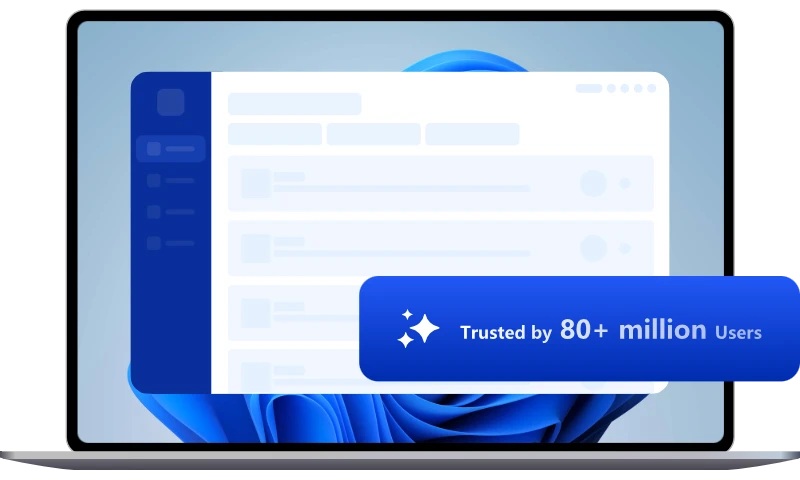Instructions to Try Out Windows 11 Without Upgrading
We can try Windows 11 by creating a virtual machine. This not only satisfies you not to upgrade to Windows 11, but also allows you to experience the new features of Windows 11.
It's feasible to take Windows 11 for a twist without upsetting your Windows 10 arrangement. Here's the way with the assistance of virtualization software.
Microsoft once said Windows 10 would be the last foundation of its series. Notwithstanding, that hasn't ended up being valid since the Redmond organization has as of late delivered Windows 11. Accordingly, another time has started for Microsoft's leader OS establishment.
In this way, presently you can introduce Windows 11 assuming your PC meets its framework necessities. However, a few clients may be uncertain with regard to whether or not they should move up to the most recent work area stage. Anyway, would you like to evaluate Windows 11 without moving up to it? Assuming this is the case, you can do definitively that, as clarified beneath.
Microsoft's Windows 11 Rollout
Microsoft released Windows 11 on October 5, 2021. Presently, they are dispersing the new working framework to viable Windows 10 gadgets with a staged rollout process. The software giant is carrying out its most recent work area stage as a free move up to clients all through 2021 and 2022.
In the event that your Windows 10 PC meets all the new stage's framework prerequisites, you'll get a free overhaul offer. That proposition shows up inside the Windows Update tab in Settings. At the point when you acknowledge that proposition, you can click its Download and introduce button there to redesign.
In this way, it's clear enough to move up to Windows 11 from Windows 10. Nonetheless, would you like to upgrade? Indeed, you can peruse audits for the most recent OS; however, the most ideal method for discovering what the new stage resembles without upgrading is to give it a shot with virtualization software.
What Is Virtualization Software?
Virtualization software bundles are those that partition PCs' framework assets into virtual PCs. They empower you to use Windows, Mac, Linux, and other working frameworks inside a window without introducing them over your PC's current stage. A working framework running inside the virtualization software is known as a virtual machine.
Subsequently, virtualization software bundles give a method for evaluating a wide range of stages on your PC. To give Windows 11 a trial prior to overhauling, you can introduce a work area virtual machine application.
There are various virtualization software bundles for Windows 10. Some of them are openly accessible, like VMware Workstation 16 Player and VirtualBox. Thus, you can evaluate Windows 11 at no additional expense with the VMware Workstation 16 hypervisor.
Download VMware Workstation 16 Player and a Windows 11 ISO
To begin with, you'll need to download and introduce VMware Workstation 16 Player. To do as such, click the Download Now interface (for the Windows rendition) on the VMware Workstation 16 Player website page. In case you haven't changed your program's default settings, it will naturally download to your Downloads organizer.
After downloading VMware Workstation's arrangement wizard, introduce the product. Press File Manager's Windows key + E hotkey. Open the envelope that incorporates the VMware Workstation installer. Then, at that point, double tap the VMware Player EXE record to open the arrangement wizard and introduce the application.
You'll likewise have to download a Windows 11 ISO record. You can get that record from the Download Windows 11 page. To start with, select Windows 11 on the release drop-down menu there, and click the Download button. Then, pick an item language on the drop-down menu, and select the Confirm choice. Then, at that point, press the 64-bit Download button.
Set Up a Windows 11 Virtual Machine With VMware Workstation 16 Player
At the point when the Windows 11 ISO has gotten done with downloading, you're prepared to set up your virtual machine. Dispatch the VMware Workstation 16 Player software. Click the Create a New Virtual Machine choice on its window to raise the wizard.
Select the Installer circle picture document (iso) radio button. Then, at that point, click Browse to open a record choice window. Select the Windows 11 ISO you downloaded, and press the Open button.
Click Next to raise the visitor OS choices. Select the Microsoft Windows choice. Then, pick Windows 10 x64 on the Version drop-down menu.
Select Next to continue to name choices. It's presumably best to name the virtual machine Windows 11. You can leave the default area for what it's worth.
Click Next again to continue on to indicating circle size. Set the Maximum plate size choice to at least 64 gigabytes. Select the Store virtual plate as a solitary document setting.
Press the Next button to reach the final virtual machine setup step. Click the Customize Hardware button to open the window in the screenshot directly below. The RAM allocation must be at least four GB (gigabytes) on the Memory bar. If your PC has 16 or more GB RAM, it's recommended to drag the bar's slider up to eight GB. Then click Close to exit the window.
Click Finish to create the virtual machine. Your new virtual machine will appear below VMware WorkStation Player's Home menu. Select Windows 11 (if you called it that) on that menu, and click the Play virtual machine option.
The Windows 11 Setup Process
When you start the virtual machine, you'll see a "Press any key to boot from CD or DVD" message. Press any key as instructed to bring up the Windows Setup. Now you'll need to go through the Windows Setup wizard.
After selecting your language preferences, you'll reach an activated Windows step. You don't need to enter a product key for installation. So, you can click the "I don't have a product key" option to skip it. However, Windows 11 will run with some limitations while displaying an "Activate Windows" on the bottom right of the screen. The Settings app will also nag you to buy a Windows 11 product key.
Alternatively, you can input a generic Windows 11 product key there. Those are temporary keys you can enter to install and try out Windows platforms. However, generic keys expire after 30-90 day time periods unless you are in an organization that has a Key Management Service.
These are four generic keys for alternative Windows 11 editions:
Windows 11 Home: YTMG3-N6DKC-DKB77-7M9GH-8HVX7
Windows 11 Pro: VK7JG-NPHTM-C97JM-9MPGT-3V66T
Windows 11 Enterprise: XGVPP-NMH47-7TTHJ-W3FW7-8HV2C
Windows 11 Education: YNMGQ-8RYV3-4PGQ3-C8XTP-7CFBY

